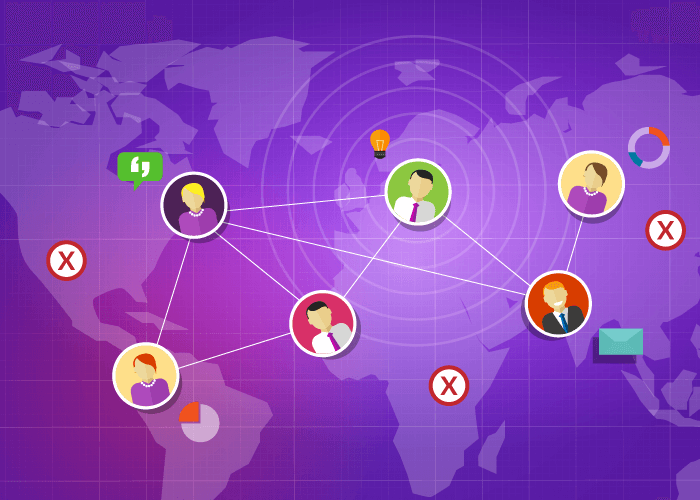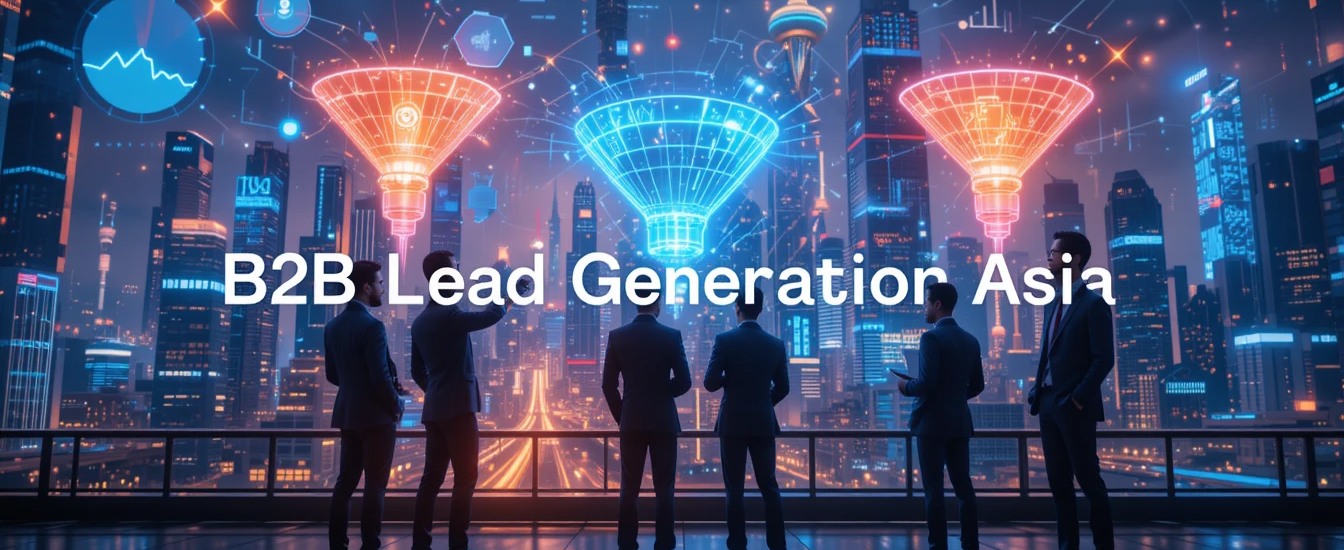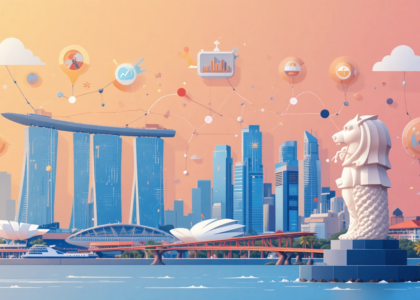Introduction: The Complexity of B2B Lead Generation in Asia
Doing business in Asia isn’t about copying and pasting what worked in the U.S. or Europe. It’s a completely different ballgame—one where B2B Lead Generation for Asia demands a market-specific playbook that respects diversity, culture, and technology adoption. Companies that ignore this reality quickly discover that their funnels dry up, conversations stall, and deals vanish.
Unlike Western markets, where buyer behavior can be mapped with relative predictability, Asia is fragmented. Every region has its own rhythm, influenced by language, history, and even trust-building styles. Here, relationships often matter more than sales pitches, and decision-making cycles can stretch far longer than expected. The gritty truth? Without a tailored approach, even the most sophisticated strategies fall flat.
This is where AI Marketing has started to reshape the landscape. By analyzing behavioral signals across regions, industries, and cultures, companies can design smarter outreach and reduce wasted effort. More importantly, solutions like iSmart AI Marketing Service are emerging as allies for businesses seeking to decode Asia’s complexity and win trust at scale.
The stakes are high. Asia is home to some of the fastest-growing economies in the world. But growth is only accessible to those willing to adapt, invest, and build region-specific playbooks for lead generation. This article dives into why generic strategies fail, the cultural nuances at play, and how technology and AI-powered solutions are helping global businesses win in this dynamic market.

Understanding the Asian B2B Landscape
Asia isn’t one market. It’s a mosaic of dozens of markets, each with its own character. If you want to crack B2B Lead Generation for Asia, you need to first grasp the sheer diversity that defines it.
Take East Asia—China, Japan, South Korea. These markets are tech-forward but highly relationship-driven. Buyers here often expect long-term credibility before committing to partnerships. In contrast, Southeast Asia, with markets like Vietnam, Thailand, and Indonesia, is mobile-first, price-sensitive, and highly social in its business approach. Then there’s South Asia, led by India, where scale, cost-effectiveness, and innovation drive decision-making.
This variation extends to digital adoption. In Singapore, LinkedIn thrives as a B2B channel. In China, however, it’s WeChat and Baidu search ads that fuel conversations. Misreading these differences leads to campaigns that never land with the right audience.
Here’s the gritty part: too many global companies lump Asia together as one “region.” That’s a costly mistake. Each market requires distinct targeting, customized messaging, and adapted lead nurturing flows.
This is where AI Marketing steps in. Platforms like iSmart AI Marketing Service empower companies to parse massive datasets, track regional behavior patterns, and identify the right channels per market. With AI-driven insights, businesses can stop guessing and start executing with surgical precision.
Understanding Asia’s B2B landscape isn’t optional—it’s survival. If you skip this foundational step, you’ll waste time, money, and credibility chasing leads that were never going to convert.

Cultural Nuances That Impact Lead Generation
Culture isn’t a side note in B2B Lead Generation for Asia—it’s the central stage. In the West, efficiency and quick deal-making often rule the day. In Asia, patience and relationships often dictate the pace. Misstep here, and no amount of clever advertising can save you.
For example, in Japan, silence in a meeting is often a sign of respect and thoughtfulness—not disinterest. In India, decision-making frequently involves multiple stakeholders, sometimes across entire families in family-run businesses. In China, guanxi—the practice of building trusted networks—remains an unshakable foundation of business.
Language also matters. A slick English-language campaign might resonate in Singapore but fall flat in Thailand, where localized communication signals deeper commitment. Tone and etiquette vary widely across borders, and ignoring these nuances can brand a company as tone-deaf.
Here’s where the rise of AI Marketing becomes transformative. Tools like iSmart AI Marketing Service can analyze language preferences, buying behaviors, and cultural cues, helping companies craft campaigns that feel local, not foreign. Instead of blasting generic content, AI makes it possible to design micro-segmented strategies aligned with cultural expectations.
The hard truth is this: in Asia, no deal moves forward without trust. And trust isn’t built overnight. By respecting cultural nuance, aligning communication styles, and showing long-term commitment, companies position themselves as credible partners. AI can accelerate that process, but the human touch—listening, adapting, and showing respect—remains irreplaceable.

The Role of Technology and Platforms
When it comes to B2B Lead Generation for Asia, understanding technology usage is non-negotiable. This isn’t just about which social platform is trending—it’s about aligning with how entire markets consume and process information.
LinkedIn dominates in Singapore, Hong Kong, and India, but in China, it’s virtually irrelevant. Instead, WeChat is the backbone of business communication. Japan leans heavily on LINE, while South Korea thrives on KakaoTalk. Then consider Southeast Asia: mobile-first and socially vibrant, where apps like WhatsApp and Facebook Messenger carry as much weight as email.
If you’re still relying on email blasts, you’re already behind. Buyers across Asia are increasingly digital-native, expecting personalized, conversational engagement. They’re not impressed by mass outreach—they want relevance.
This is where AI Marketing flexes its muscle. Through platforms like iSmart AI Marketing Service, businesses can integrate cross-platform data, track conversations, and build automated yet personalized engagement funnels. AI doesn’t just manage volume; it tailors interaction at scale. Imagine reaching out to a decision-maker in Shanghai through WeChat with localized content while simultaneously nurturing a lead in Singapore via LinkedIn messages—all orchestrated by AI.
The gritty truth? Technology is the great equalizer, but only if used strategically. Spray-and-pray campaigns are dead. Companies that master Asia’s platforms and pair them with AI-driven insights will dominate. Those that ignore them will keep wondering why their pipelines stay empty.

Market-Specific Playbook: Tailored Strategies for Asia
Here’s the heart of the matter: you need a market-specific playbook for B2B Lead Generation for Asia. Without it, you’re flying blind.
A winning playbook has three pillars: localized content, tailored nurturing, and the right partnerships. Localized content means more than translation. It’s about creating narratives that reflect regional business pain points. A cybersecurity solution pitched in Japan might emphasize compliance and reliability, while in India, it might highlight scalability and affordability.
Lead nurturing also changes by region. In the Philippines, personal follow-ups matter. In South Korea, social proof and brand reputation carry weight. In Vietnam, quick digital interactions on mobile apps may drive more traction than lengthy corporate decks.
Then there are partnerships. In Asia, teaming up with local distributors, influencers, or trade associations can fast-track trust and open doors that cold outreach never could.
Enter AI Marketing. With platforms like iSmart AI Marketing Service, you can build adaptive playbooks per region. AI identifies high-intent accounts, maps cultural preferences, and aligns communication strategies with buyer expectations. Instead of burning resources on guesswork, you create precision-targeted campaigns that feel native.
A generic Western approach is a recipe for irrelevance. A market-specific playbook is the only way forward. AI makes it scalable, but strategy keeps it real.

Common Mistakes Global Companies Make in Asia
If there’s one thing I’ve seen repeatedly in B2B Lead Generation for Asia, it’s this: global companies consistently underestimate complexity. They show up with Western playbooks, slap a “localized” tagline on their campaign, and expect results. The outcome? Crickets.
Mistake one: assuming Asia is one uniform market. It isn’t. Treating India like Japan or Singapore like Vietnam is reckless. Mistake two: ignoring cultural and regulatory nuances. Privacy laws in China or compliance requirements in Japan can derail even the most polished strategies if not respected.
Another common misstep is rushing relationships. In the West, a few strong touchpoints might push a deal forward. In Asia, skipping the relationship-building phase is like trying to sprint without tying your shoelaces—you’ll trip fast.
Finally, too many companies dismiss technology adoption differences. What works on LinkedIn in London won’t work on WeChat in Shanghai. If you don’t understand platforms, you’re not even in the game.
This is where AI Marketing tools like iSmart AI Marketing Service provide a lifeline. They decode market behaviors, flag compliance pitfalls, and help adapt engagement strategies at scale. But here’s the gritty truth: no amount of AI can save a company that refuses to learn, adapt, and respect the rules of the market they’re entering.
Global companies fail in Asia not because the opportunity isn’t there—it’s because they’re unwilling to unlearn old habits.
Conclusion: Building a Winning Playbook for Asia
Asia isn’t a side market—it’s the future of global business. But winning here requires humility, grit, and adaptability. A one-size-fits-all strategy simply doesn’t cut it. The only path forward is creating a market-specific playbook for B2B Lead Generation for Asia that respects culture, leverages the right platforms, and builds long-term trust.
The rise of AI Marketing has given companies an unprecedented edge. With solutions like iSmart AI Marketing Service, it’s possible to turn complexity into clarity, ensuring every campaign feels relevant and every lead is nurtured with intelligence. AI won’t replace human insight, but it will amplify it—making strategies scalable and measurable.
The gritty reality is this: Asia rewards companies that play the long game. The deals are bigger, the partnerships more enduring, but only for those who adapt to the market’s unique rhythm. If you want to win, stop forcing Western frameworks and start crafting strategies designed for Asia.
Your next big opportunity is waiting—but only if you build the right playbook.





